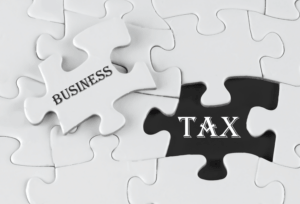
A gym’s sale price is often calculated by applying a multiple, typically between 3 to 5, to its annual earnings (EBITDA). Therefore, a gym with an EBITDA of $200,000 might sell for between $600,000 to $1,000,000. Utilizing Exercise.com’s gym management software, owners can efficiently track and optimize their business operations and financials, potentially increasing the gym’s value and selling price.
Is owning a gym a profitable business?
- For gym owners, using Exercise.com’s software to accurately track and manage financial data can aid in applying this valuation method effectively.
- The nicest and most equipped gyms in El Paso are large franchises that have too many rules and regulations.
- The most commonly used valuation method for a gym is the Earnings Multiple Method.
- A gym’s financial statement is composed of several key components, each serving a specific purpose.
- Analyzing both revenue and expenses together provides a comprehensive view of the gym’s financial health and allows for informed decision-making.
- Efficient management and optimization of a gym’s operations and finances, as facilitated by Exercise.com, can positively impact its profitability and, consequently, the selling multiple.
By assessing the local market and competition, you can better understand the factors that may impact your gym’s value and develop strategies to mitigate potential risks or capitalize on opportunities. By comparing your gym’s performance to industry averages, you can identify areas of strength and weakness and assess its overall value relative to other businesses. This method provides a general valuation but should be supplemented with other methods for a more comprehensive understanding of a gym’s value. To learn more about telling your fitness business story “by the numbers” schedule a call with an NPE Success Coach.
Assessing Cash Flow Patterns and Liquidity in Gym Financial Statements

For a new gym, use projected earnings, considering factors like expected membership numbers, pricing strategy, and anticipated operational costs. An industry-standard multiple, typically between 3 to 5, can then be applied to these projected earnings. However, because the gym is new and lacks historical financial data, this calculation may require more assumptions and market analysis.

Sales tax information
Once you know where you are and how you got there, you can design what “levers” you can, and should, pull in order to effectively grow your business to where you want to go. If we know where we started + where we are now via our balance sheet, we now must understand how profitable we are over periods of time. In practice, many small business owners open businesses because they want to maintain a specific lifestyle more so than make profit. I respect that greatly, but we must align on an outcome for this article to make sense. Register Your Gym Business – Once you have chosen a legal structure, the next step is to register your gym business with the government or state where you’re operating from. This includes obtaining licenses and permits as required by federal, state, and local laws.
- To get a loan to buy a gym, start by preparing a detailed business plan that outlines the gym’s value proposition, financial projections, and growth potential.
- Regular bookkeeping will help you stay on top of your finances and will make tax time much easier.
- This statement tracks the expected flow of cash into and out of your business.
- Our ready-made Gym business plan template is in Word format and includes 24 pages.
- There are specific IRS rules about how to calculate and report depreciation.
- The most important metrics for proving ROI in the fitness gym health club industry include member retention rates, average revenue per member, cost of customer acquisition, and profit margins.
This method provides a simpler approach that matches inflows with outflows directly. While it may be suitable for smaller or cash-based businesses, cash basis accounting may not provide an accurate representation of a gym’s financial health as it does not consider outstanding payments or future obligations. Gyms should carefully consider which method aligns best with their https://www.bookstime.com/ size, complexity, and long-term goals. While accrual basis accounting requires diligent record-keeping and tracking outstanding payments from members or vendors, it offers more comprehensive financial reporting capabilities that can support better decision-making. Key Performance Indicators (KPIs) are specific metrics that reflect the critical success factors of your gym.
Can’t find the business?
- They enable you to track your progress, set realistic goals, and measure your gym’s performance against industry standards.
- Some gym owners may make a substantial income, especially if they own multiple locations or have a large, loyal membership base.
- Key performance indicators (KPIs) provide valuable insights into the financial health of a gym and help owners make informed decisions.
- Properly accounting for depreciation allows owners to allocate expenses over the useful life of the equipment.
We have outlined these indicators in the “Checks” tab of our financial model. This provides guidelines to quickly correct and adjust your financial plan to achieve relevant metrics. The gym income statement process is automated to eliminate the need for manual calculations or complex Excel tasks. Simply enter your data into the designated fields and choose from the provided options.
Gym Financial Plan: Conclusion
These services are typically charged separately and contribute to the overall revenue generated by the gym. Gyms generate revenue from various sources, each requiring careful consideration for proper accounting. These fees can be charged on a monthly or annual basis, depending on the membership package chosen by the customer. Moreover, maintaining well-organized records and financial statements can simplify tax filing processes. It ensures compliance with tax regulations by providing accurate information necessary for calculating taxable income, deductible expenses, and other relevant tax obligations. Keep a close eye on the money coming in and going out of your business and create forecasts to help anticipate future cash flow.
What is typically included in a gym income statement?
How to Read a Profit & Loss Statement for Your Fitness Business
